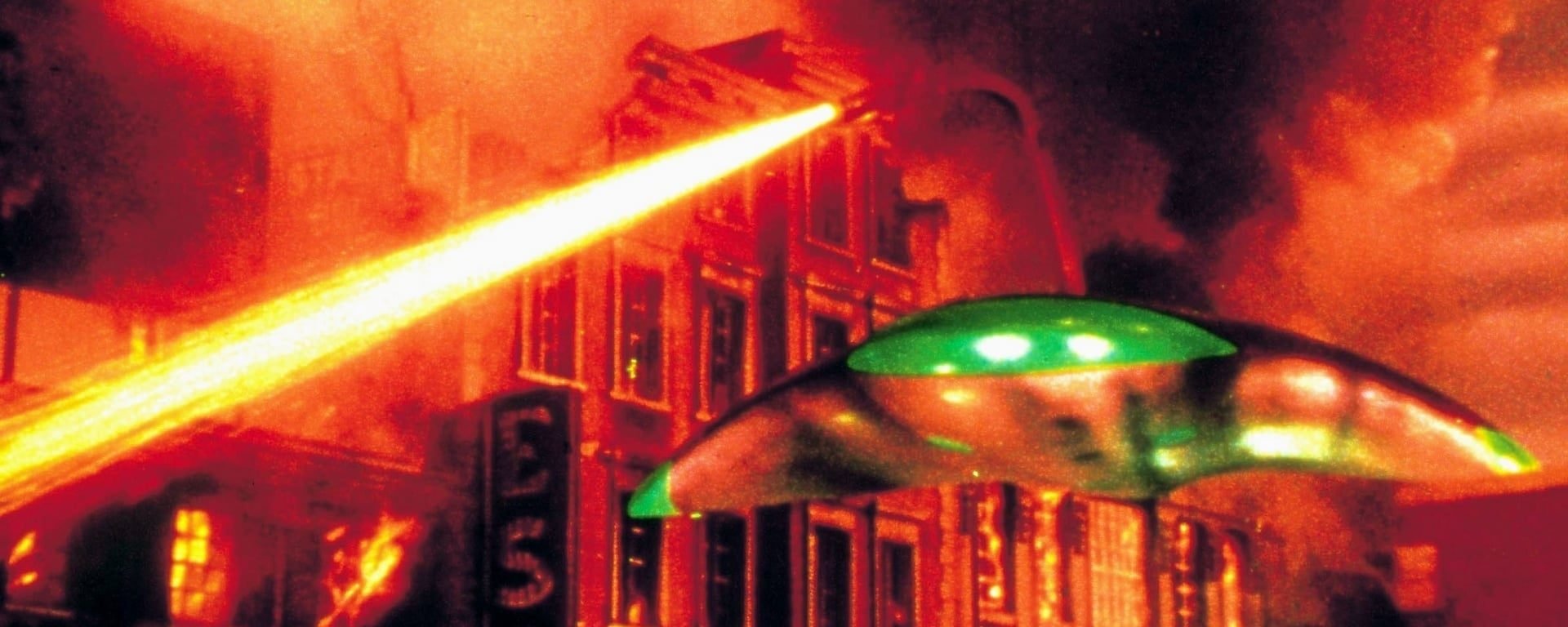
The War Of The Worlds
The War Of The Worlds (1953) is the first film version of H.G. Wells’s 1897 science fiction masterpiece, a radio broadcast of which had caused widespread panic in 1938. The first two-thirds of the 60-minute radio show, directed by Orson Welles, sounds like a news bulletin and thousands of people listening believed it really was the end of the world.
The film’s narrative follows the residents of a small town in California, who are excited when a flaming meteor crashes into the hills above the town. However, their excitement turns to fear as they realise that the meteor is actually a magnetic travelling machine from Mars and its occupants are far from friendly.
The film has an interesting classification history. It started life classified at X, moved through to A, and down to its modern-day PG certificate.
When the distributors first submitted the film feature to the BBFC in March 1953, the BBFC considered some of the film’s scenes to be "very alarming and a number could certainly be described as ‘horrific'”. A letter to the film’s distributor, Paramount, states that
"The number of such scenes makes it impracticable, we consider, to suggest cuts for an ‘A’ certificate… We have no alternative, therefore, but to place the film - without any cuts, of course – in the ‘X’ category".
However, some local authorities were asked to reconsider the 'X' awarded by the BBFC. Letters from some local councils, including Great Yarmouth in Norfolk and Blackburn in Lancashire, asked the BBFC for an explanation as to why the 'X' had been awarded. In his letter to Charles Robinson, Blackburn Town Clerk, the BBFC Secretary, Arthur Watkins, stated "The Board considers that a number of scenes would be very likely to frighten younger children who, under an ‘A’ certificate, would be able to see the film with their parents".
Mr Robinson later replies that he has refused the application of the cinema who requested the lower certificate, but "permission has been granted to show it in this Borough in accordance with the ‘X’ certificate granted by the Board".
Paramount sought to have the film’s certificate reduced from an X to an A in 1961, but received a letter from the BBFC’s new Secretary, John Trevelyan, stating that this was "carefully considered", but "there are too many scenes in it which would be unacceptable for any category that would admit children".
The film was eventually classified 'A' in 1981, although by that time the meaning of 'A' had changed from requiring that under 16s should be accompanied to meaning that parents were warned that some content may be unsuitable for under 14s. One of the Examiners viewing the film said
"When this film was first issued, I was not old enough to see it with its X certificate. However it, like me, has aged and today’s television-reared generation shouldn’t find it too alarming either in theme or treatment".
The film’s dominant issues are still violence and horror, though age had, by the 1980s, reduced the impact, and audience expectations at lower categories had shifted, so we classified the video release at PG in 1986. The strongest scene, noted throughout the history of its submission to the BBFC, shows two men on fire, collapsing to the ground and screaming. However, there is no close-up detail and the scene quickly moves on. The alien attacks are what the BBFC describes as 'sustained' in terms of visual detail. They comprise zaps of red and green light, flames and explosions, with very little focus on victims. Where there are victims they simply disappear on the spot, as if teleported elsewhere, or are shown as human-shaped piles of ashes.
In 1953, with the nation recovering from a recent and very real threat from the Communist east, the film presented enough disturbing realism to require an adult only rating. It is a very different thing today – an entertaining example of 1950s science fiction at its most imaginative.